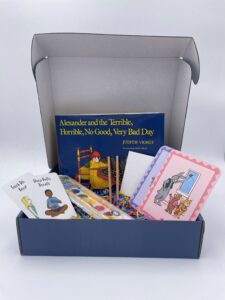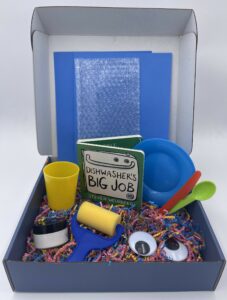Many of us, whether parents or educators, have the “Last Day of School” clearly marked on our calendars. That day kickstarts weeks of play, wonder, and investigation. Days are filled with excursions, camps, and holidays. A break is given to the weight of the backpack. Because summer invites lightness.
However, we know the weightiness of the research behind the phenomenon of summer slide. In her blog LET’S KEEP THEM READING! TIPS FOR KEEPING YOUR STUDENTS READING DURING THE SUMMER MONTHS, Jenni Aberli provides tips for circumventing summer reading loss such as frequenting the public library, listening to audio books, and providing choice in reading materials.
Just as important is a consciousness for promoting a balance between free-range and educational learning opportunities. Play can live inside both.
Play can be independent, social, and/or guided. Independent play might look like assembling a puzzle on the living room floor or roleplaying with dollhouse people at the kitchen table. Social play might look like a game of kickball in the backyard or a nature walk through the neighborhood. Guided play might look like an excursion to an artist-led painting workshop or a visit to an instructor-led yoga class. And all three types of play are important: independent, social, and guided.
The article Summertime, Playtime captures some of the many benefits that derive from a balanced approach to summer play (Shafer, 2018):
- Intellectual Development
- Social Development
- Emotional Development
- Physical Development
If, for instance, a child is independently playing with a basket of interlocking blocks, we can observe the intellectual development as they problem-solve and lock and unlock pieces to create a design. A child who is engaged in an afternoon of relay races might pay attention to self and others’ ideas and feelings as part of their social development. Another child may undergo emotional development as they play a matching game with a friend or family member because they are having to be mindful of their feelings such as frustration. A child’s physical development might be observed as they race a friend across the length of a pool.
Children need guidance in generating ideas for play. It could be the second day of summer break (or the last) and there is at least one child somewhere declaring “I’m BORED!” That’s where we support playful summer learning experiences.
How can you support?
- Plan for play
- Utilize available playful resources
- Model play
- Play together
- Do not over-schedule: create space and time for spontaneous play



How can CTL support? Invite your child to our website to choose an Artful Reading on the Go! kit, based on a book and resources that interest them. Kits are available from age 3 to teens. Once the kit arrives at your home, engage in playful activities that will build your child’s intellectual, social, emotional, and/or physical development. Each kit invites you to model and play together alongside your child.
By the time the calendar reads “First Day of School,” your child will have made a summer of memories from independent, guided and social play.
Citations
Aberli, J. (2023, May 2). Let’s keep them reading! tips for keeping your students reading during the summer months – CTL – collaborative for teaching and learning. CTL. https://ctlonline.org/lets-keep-them-reading-tips-for-keeping-your-students-reading-during-the-summer-months/
Shafer, L. (2018, June 12). Summertime, playtime. Harvard Graduate School of Education. https://www.gse.harvard.edu/news/uk/18/06/summertime-playtime
